Asana is a popular work management platform known for its intuitive interface, collaboration features, and task-tracking capabilities. Many teams across industries rely on Asana to streamline workflows and ensure project visibility.
However, some users seek alternatives due to its limitations in handling complex projects, scalability concerns, or specific feature needs such as advanced reporting, integrations, or automation. Exploring Asana alternatives can help find a solution better suited for unique business requirements or specific team dynamics.
Geekflare tested dozens of project management tools and shortlisted the best Asana alternatives based on features, pricing, pros & cons, and more.
- monday.com – Best Overall
- Wrike – Complex Projects
- ClickUp – Best for Small Teams
- Smartsheet – Best for Workflow Automation
- Notion – Best All-in-One Workspace
- Trello – Best for Visual Task Management
- Basecamp – Best for Simplicity
- Jira – Best for Software Development
- Teamwork – Best for Client Management
- Airtable – Best for Project Tracking
- Microsoft Project – Best for Microsoft 365 Integrations
- ProofHub – Best for Team Collaborations
- Hive – New in the Market
- OpenProject – Best Open Source to Self-Host
- Show less
You can trust Geekflare
At Geekflare, trust and transparency are paramount. Our team of experts, with over 185 years of combined experience in business and technology, tests and reviews software, ensuring our ratings and awards are unbiased and reliable. Learn how we test.
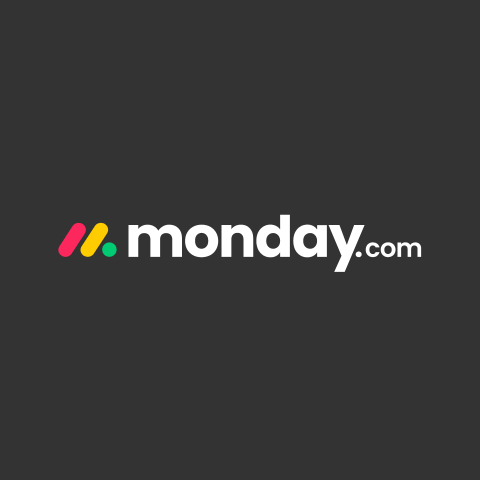
monday.com
Best Overall
- Ideal ForSmall Teams, Startups
- Integrations200+
About monday.com
monday.com is designed to streamline teamwork through easy customization. It offers an intuitive interface that allows teams of any size to manage tasks, projects, and workflows in a visually organized way. Whether task tracking, project planning, or resource management, monday.com’s automated workflows and visual tools like Gantt charts and Kanban boards make project management effortless.
monday.com works great for teams across various sectors, including marketing, sales, IT, and product development, making it an excellent alternative to Asana. What sets monday.com apart is its no-code automation, integrations with popular tools like Slack and Google Drive, and advanced AI features that help with data categorization, sentiment analysis, and task automation.
Whether you’re running a small business or a large enterprise, monday.com’s scalability and real-time collaboration tools make it a great choice for those looking to replace Asana.
Why consider monday.com as an Asana alternative?
monday.com offers highly customizable workflows with vibrant visual project tracking and advanced automation, making it ideal for teams needing the flexibility that Asana lacks in customization options.
monday.com Features
Customizable Dashboards: Create fully customizable, no-code dashboards with high-level overviews and detailed reports.
Automation: Set up no-code & time-saving automation to notify, assign tasks, and streamline repetitive workflows.
Integrations: Seamlessly integrates with over 200+ tools, including Google Calendar, Slack, and Dropbox.
AI-powered Workflows: AI features like sentiment analysis and task suggestions help users make informed decisions and optimize processes.
Collaboration Tools: Keep everyone on the same page with real-time updates, file sharing, and notifications.
Gantt and Kanban Views: Visualize project timelines, track milestones, and manage workflows easily with Gantt and Kanban boards.
Security and Data Privacy: monday.com ensures data ownership and privacy by not using customer data to train AI models or share it with third parties.
monday.com Pros/Cons
Offers a free forever plan with access to 3 boards, unlimited docs, 200+ templates, and more.
Offers powerful AI that automates time-consuming tasks like categorizing data and generating summaries.
Designed with intuitive navigation and engaging visuals.
Versatile enough to serve creative teams, solopreneurs, sales teams, small businesses, and those with more complex needs.
New users may initially find the extensive features like templates and customization options overwhelming.
Costs can escalate with additional features and larger teams, especially because of the price/per/user pricing model.
There’s no built-in communication feature. To send a quick message or email to a teammate, users need to rely on external integrations like Slack to stay updated.
Time tracking is only available in the pro and enterprise plans.
Want to explore the softwares for creating Gantt charts? Explore this guide on best Gantt chart software to use.
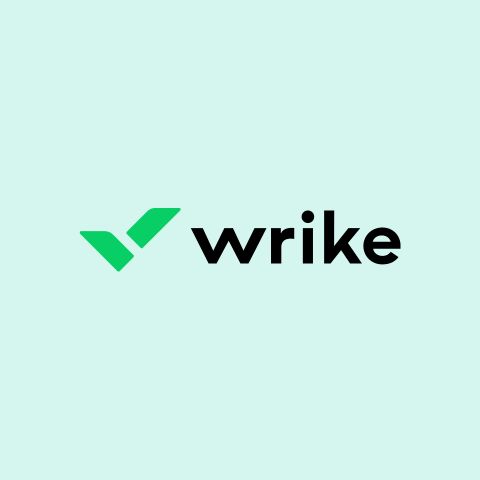
Wrike
Complex Projects
- Ideal ForMedium to Large Enterprises
- Integrations400+
About Wrike
Wrike offers powerful project management features and is designed to streamline collaboration and enhance productivity for teams of all sizes. Wrike caters to a wide range of business needs, making it an ideal choice for organizations looking to improve project management and communication. The platform provides a central hub for teams to organize tasks, track progress, and manage resources efficiently.
A key highlight of Wrike is its flexibility. Users can customize workflows, create project templates, and set up dashboards tailored to their specific requirements. The platform supports integration with over 400 applications, enabling teams to work seamlessly across various tools. Additionally, Wrike’s advanced reporting and analytics capabilities allow organizations to gain valuable insights into their performance and optimize processes.
Wrike prioritizes security, offering customizable user types and access roles to protect sensitive information. The platform’s built-in file storage and collaboration features ensure that teams can work together effectively, whether in the office or remotely.
Why consider Wrike as an Asana alternative?
Wrike offers superior project organization and over 400 integrations (almost double that of Asana). Its intuitive AI features streamline task management, making it easier to handle complex projects. Additionally, Wrike provides 24/7 award-winning customer support to ensure teams stay productive.
Wrike Features
Customizable Workflows: Tailor workflows to fit your team’s unique processes, enhancing efficiency and productivity.
Advanced Reporting: Utilize real-time reporting and analytics to measure project success and inform strategic decisions.
Flexible Dashboards: Create custom dashboards using widgets to visualize data and track performance easily.
Secure Collaboration: Control user access with customizable roles and locked spaces for confidential information.
Mobile Access: Manage tasks and projects from anywhere using Wrike’s mobile app for iOS and Android devices.
Generative AI: Leverage AI features to enhance productivity, create project plans, and automate repetitive tasks.
Wrike Pros/Cons
Offers a free plan for a single user with features like web, project & task management, board view, and more.
Prioritizes data security with encryption protocols, role-based access controls, and user authentication methods like multi-factor authentication and SSO.
Offers Gantt charts for project visualization and tools for file review and feedback, it meets all project management needs.
Advanced reporting & business intelligence are only available in the most expensive ‘Pinnacle’ plan.
Users in the Team and Business plans have limited storage, which may not be sufficient for teams handling large files.
Task management feels weak because it lacks task prioritization, has issues with updating task statuses, and doesn’t allow users to turn comments into active tasks.
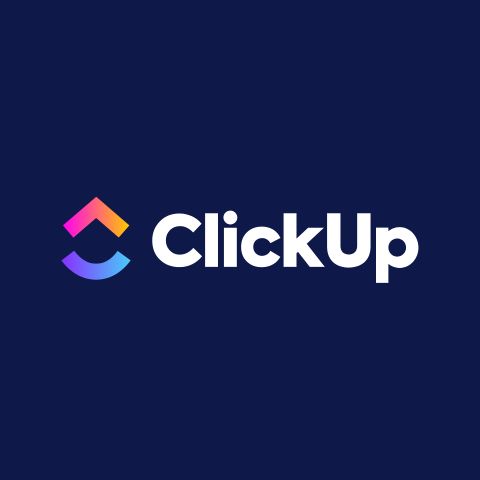
ClickUp
Best for Small Teams
- Ideal ForFreelancers, SMBs
- Integrations1,000+
About ClickUp
ClickUp is a productivity platform designed to streamline project management and team collaboration. It allows users to organize tasks, track progress, and enhance communication—all within a single application. It supports a diverse range of project methodologies, including Agile, Waterfall, and everything in between. Users can easily customize workflows, integrate various tools, and automate repetitive tasks, which significantly boosts efficiency and productivity.
What sets ClickUp apart is its flexibility and scalability. Teams can create personalized dashboards, visualize their projects with Gantt charts, or manage workloads with Kanban boards. The platform also features powerful reporting tools, enabling teams to gain insights into their performance and make data-driven decisions. Furthermore, ClickUp integrates seamlessly with numerous other applications, such as Slack, GitHub, and Google Drive.
ClickUp offers features for document collaboration, time tracking, and goal setting. Its powerful automation features allow users to automate repetitive tasks and streamline workflows, allowing them to focus on more strategic initiatives.
Why consider ClickUp as an Asana alternative?
ClickUp offers a set of features without the paywalls that limit access in Asana. It offers more customization and flexibility, allowing teams from various fields to tailor the platform to their specific needs.
ClickUp Features
Task Management: Create, assign, and track tasks with ease, ensuring everyone knows their responsibilities.
Custom Dashboards: Visualize project progress and performance metrics tailored to your team’s needs.
Automation: Automate repetitive tasks and workflows to save time and reduce errors.
Collaboration Tools: Share documents, add comments, and collaborate in real-time to enhance teamwork.
Time Tracking: Monitor time spent on tasks to improve accountability and productivity.
Reporting: Generate detailed reports to analyze team performance and project progress.
ClickUp Pros/Cons
Offers a highly adaptable interface that enables you to design and modify workflows tailored to your team’s requirements.
Provides an easy to use with a clean and organized dashboard that lets you see all your tasks and projects in one place.
All paid ClickUp plans feature AI tools that provide quick access to task and document information while the AI Project Manager automates updates and summaries.
Does not provide phone support, requiring users to rely on email for assistance.
Although ClickUp can accommodate larger teams, it may not be the best choice for companies with hundreds of employees, as the platform can become cluttered and challenging to navigate.
Have a learning curve and can delay the onboarding and adoption.
Lacks direct integration with accounting software.
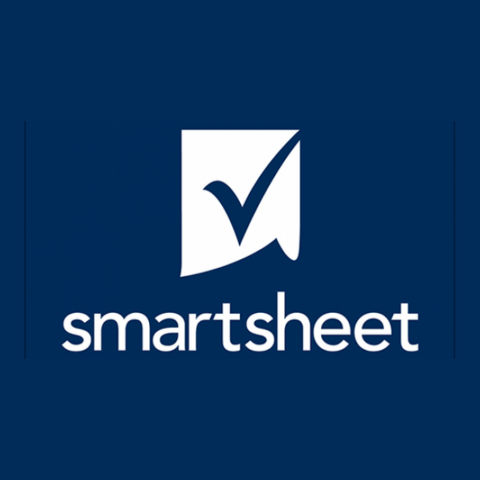
Smartsheet
Best for Workflow Automation
- Ideal ForLarge Enterprises
- Integrations125
About Smartsheet
Smartsheet is a work management platform designed to adapt to the diverse needs of teams and organizations, ranging from small projects to large enterprise portfolios. It empowers users to manage and execute projects efficiently, ensuring alignment with business goals while enhancing collaboration across various departments. Smartsheet is suitable for various use cases, including project management, event planning, resource management, and more.
Smartsheet lets users create customized dashboards and reports, allowing for real-time visibility into project status and team performance. Its powerful automation capabilities help streamline repetitive tasks, reducing errors and freeing up time for more strategic work. Additionally, the platform integrates seamlessly with many software programs, such as SAP, Salesforce, Jira, Workday, Power BI, and more.
Smartsheet also places a strong emphasis on security, offering advanced controls and features to protect sensitive data. Additionally, the platform’s mobile app ensures that users can stay updated and manage their tasks on the go, making it a versatile solution for today’s dynamic work environments.
Why consider Smartsheet as an Asana alternative?
Smartsheet is ideal for teams focused on data-heavy projects or spreadsheet-like views. It offers more robust advanced reporting and automation options than Asana’s.
Smartsheet Features
Custom Dashboards: Create tailored dashboards for project tracking and visibility, enabling teams to monitor progress at a glance.
Automation Tools: Streamline workflows with no-code automation, allowing users to set up custom workflows to save time and reduce manual tasks.
Collaboration Features: Facilitate real-time collaboration through sharing updates, commenting, and attaching files directly within the platform.
Robust Integrations: Connect with popular applications like Google Workspace, Microsoft 365, and Slack to keep all your tools in sync.
Advanced Security Controls: Implement user access controls and data protection measures to ensure sensitive information is securely managed.
AI-Powered Insights: Offers AI to generate formulas, streamline decision-making, and uncover valuable insights from project data.
Smartsheet Pros/Cons
Worksheet provides valuable data insights through Smartsheet’s Work Insights feature, which visualizes key trends and bottlenecks in real-time.
Robust data protection and compliance.
Offers dashboards, charts, and reports to help users analyze data and make informed decisions.
Interface might feel complex, and the UI seems a bit outdated, especially compared to software like Monday, ClickUp, or Jira.
Users need to purchase separate add-ons for features such as time tracking, budgeting, and resource management.
While Smartsheet offers Kanban board views, it may not be the best choice for those who prefer agile project management methodologies like Scrum.
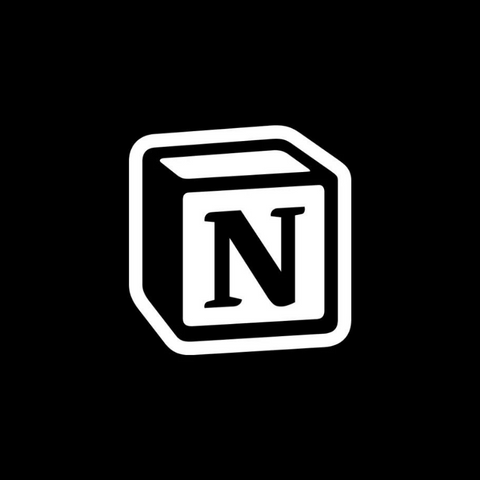
Notion
Best All-in-One Workspace
- Ideal ForSmall Businesses, Freelancers
- Integrations110
About Notion
Notion is a workspace tool designed to help teams and individuals organize their tasks, projects, and knowledge in one place. It allows users to create, collaborate, and share content seamlessly. It combines the functionalities of note-taking, task management, databases, and wikis, making it ideal for a wide range of use cases.
Whether you’re managing personal projects or collaborating with a team, Notion provides the flexibility and customization needed to meet your unique requirements. The platform offers various templates to help users get started quickly. Users can choose from thousands of pre-built templates for work, school, and personal projects.
Notion emphasizes collaboration, allowing multiple users to work on the same document in real-time. Its powerful database features help teams track progress, manage tasks, and visualize data effectively. For users interested in wiki functionalities, Notion can work as a wiki hosting service, providing a centralized space for knowledge sharing.
Why consider Notion as an Asana alternative?
Notion is a centralized workspace that integrates project management with docs, wikis, and databases, reducing tool clutter and enhancing usability. Its customizable features allow teams to tailor workflows to their needs. These features are not present in Asana.
Notion Features
Customizable Templates: Access thousands of beautifully designed templates for various purposes, including project management, education, and personal organization.
Real-Time Collaboration: Collaborate with team members in real-time, allowing seamless communication and editing.
Powerful Databases: Create databases to track tasks, projects, and resources efficiently, with customizable views and filters.
Integration Capabilities: Connect Notion with other tools like Google Drive, Slack, and Trello to streamline workflows.
Cross-Platform Accessibility: Available on iOS, Android, Mac, and Windows, ensuring users can work from anywhere.
Markdown Support: Write in Markdown for quick formatting, enabling a smoother writing experience.
Custom Domains and Branding: Upgrade plans to include custom domains, navigation bars, and personal branding options.
Notion Pros/Cons
Enhances productivity by enabling users to search, generate, analyze, and chat seamlessly within Notion.
Offers a range of tutorials and documentation to help you explore the tool better.
Easy to link and manage data across databases, integrating tasks, clients, and files in one place. With just a few clicks, you get a clear view of everything.
Wide range of blocks and templates can make it difficult for users to know where to start.
For large projects, Notion might not be the ideal tool for goal tracking. Although you can create goals and monitor progress, the platform lacks dedicated features for this purpose.
Text formatting options can feel quite different from what you might expect from traditional word processors like Google Docs.
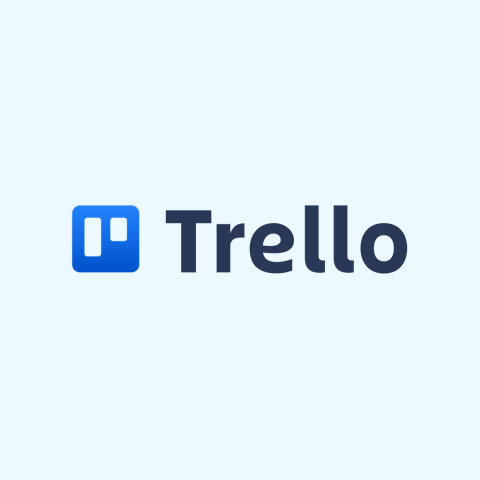
Trello
Best for Visual Task Management
- Ideal ForSmall Businesses, Freelancers
- Integrations200+
About Trello
Trello uses a simple card and board system and helps users visualize tasks, track progress, and collaborate in real-time. Users can create boards for different projects, add lists to define stages of work, and attach cards to represent individual tasks, which can include checklists, due dates, and team assignments. The platform’s flexibility allows it to cater to various workflows — from marketing campaigns to software development, ensuring that every team member stays aligned and informed.
Trello seamlessly integrates with several tools, allowing users to enhance their boards with Power-Ups. These integrations enable functionalities like file attachments from Dropbox, time tracking with Toggl, and even workflow automation through Butler.
For teams looking for enhanced visualization, Trello offers multiple viewing options, including board, list, calendar, and timeline views, allowing users to choose the perspective that best fits their needs. Its automation capabilities further reduce manual tasks, freeing up team members to focus on higher-value activities. As a powerful tool for managing workflows, Trello is among the top options for Kanban board tools, helping teams visualize their projects effectively.
Why consider Trello as an Asana alternative?
Trello provides a simpler, more visual Kanban approach with unlimited customization through Power-Ups, making it better for smaller teams seeking simplicity with add-ons. You can learn about its features in our detailed review of Trello.
Trello Features
Visual Project Management: Organize tasks with boards, lists, and cards, providing a clear overview of project progress.
Powerful Integrations: Connect with over 200 apps, including Google Drive, Slack, and Pipedrive, to streamline workflows.
Customization Options: Use custom fields, labels, and checklists to tailor your boards to fit specific project requirements.
Automation with Butler: Automate repetitive tasks and workflows to improve efficiency and reduce manual effort.
Collaboration Tools: Assign tasks, set due dates, and comment on cards for seamless teamwork and communication.
Multiple Viewing Modes: Choose from various views such as calendar, timeline, and board to visualize work in different ways.
Trello Pros/Cons
Simple, intuitive user interface.
Pricing plans are transparent and easy to understand.
Power-Ups connect with apps like Slack, Google Drive, and Dropbox, making it easy to integrate into existing workflows.
Does not offer certain advanced project management tools like time tracking, Gantt charts, and built-in reporting functionalities.
The Atlassian Intelligence and essential admin & security features are exclusive to Trello’s Premium and Enterprise plans.
Works well for small teams managing a limited number of cards. However, increasing the number of lists, cards, and users on a board can become more challenging to manage.
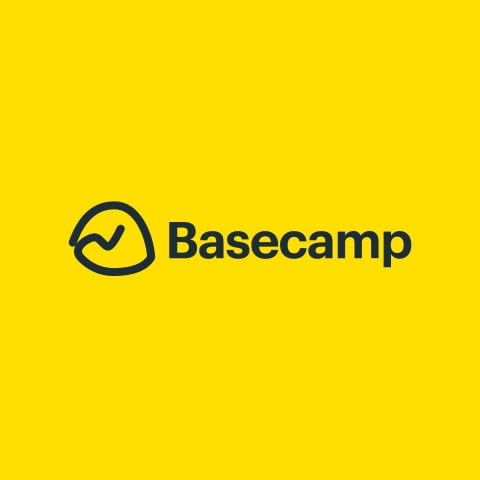
Basecamp
Best for Simplicity
- Ideal ForSMBs, Freelancers
- Integrations80+
About Basecamp
Basecamp simplifies task management by allowing users to create to-do lists, set deadlines, and assign tasks to team members. It offers tools for team communication, such as message boards and group chat, eliminating the need for scattered emails and multiple platforms. Because of its affordability and simplicity, the platform is especially well-suited for small businesses and startups.
Basecamp offers real-time messaging, file storage, and automatic check-ins to help teams manage projects smoothly and avoid unnecessary meetings. Its flat-rate pricing, with no per-user charges, is another advantage for small businesses looking to save on costs as their teams grow.
Basecamp also caters to non-profit organizations and educational institutions, offering discounts and free accounts for eligible users. Its flexibility makes it a popular choice for remote teams, freelancers, and small companies seeking an all-in-one solution to stay organized, track progress, and collaborate effortlessly.
Why consider Basecamp as an Asana alternative?
Basecamp focuses more on team collaboration with integrated messaging, to-do lists, and automatic check-ins, offering a more team-centric approach than Asana. Also, Unlike Asana, Basecamp has a simple and clutter-free UI.
Basecamp Features
To-do lists: Create, assign, and track tasks with due dates so nothing gets missed.
Message boards: Keep all team discussions organized in one place, avoiding messy email threads.
Real-time group chat: Communicate instantly with team members, speeding up decision-making.
Automatic check-ins: Get regular updates from your team without needing daily meetings.
No per-user charge: Pay a single rate for your team, with no additional costs as your team grows.
Client collaboration: Share progress, files, and updates with clients directly through the platform.
File storage and sharing: Store documents, images, and other files for easy access and collaboration.
Basecamp Pros/Cons
Simplifies project management by centralizing all project-related information on a single page, making it easy for teams to access everything they need without getting overwhelmed.
Users can drag and drop files directly from Google into Basecamp.
Focuses on seamless team communication with built-in messaging and Slack integration. It offers message boards and automatic check-ins to track progress without extra meetings.
Its paper-stack interface makes it easy and intuitive to navigate.
Lack of task tagging or labeling options can limit the system’s ability to prioritize, allocate, or categorize work.
Limitations in creating subtasks and dependencies can hinder its ability to manage complex projects that require breaking down tasks into smaller, interconnected parts and assigning them to multiple team members.
Doesn’t offer effective task prioritization features beyond adjusting due dates.
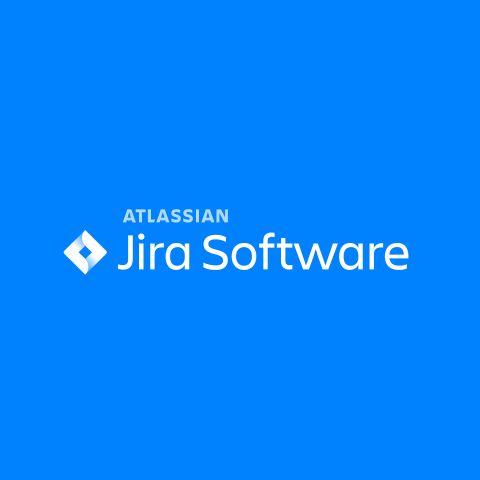
Jira
Best for Software Development
- Ideal ForLarge Enterprises
- Integrations3,000+
About Jira
Jira is designed to help teams efficiently plan, track, and manage their work. The platform supports various work styles, from agile software development to business workflows, making it ideal for teams of any size. With features like customizable workflows, backlog management, and multiple viewing options (timeline, board, calendar), Jira offers comprehensive tools to streamline project management.
One of Jira’s standout features is its integration with Atlassian Intelligence (AI), which assists in generating, summarizing, and searching content and offers smart automation capabilities. It also supports extensive external collaboration, role-based permissions, and multiple data residency options, ensuring compliance with regional data regulations.
The platform emphasizes security, offering enterprise-grade identity management, encryption, and audit logging to safeguard sensitive information. Jira is an essential solution for teams needing a flexible and scalable project management tool.
Why consider Jira as an Asana alternative?
Jira is tailored for software development teams and offers advanced features like bug tracking and sprint planning, which are more specialized than Asana’s task management tools.
Jira Features
Customizable Workflows: Tailor workflows to fit your team’s specific project management needs, ensuring flexibility and adaptability.
Multiple Viewing Options: Switch between backlog, list, board, timeline, and calendar views for an optimized visual approach to project tracking.
Atlassian Intelligence Integration: Leverage AI-powered tools for content generation, summarization, and enhanced search functionalities.
Automation Capabilities: Automate repetitive tasks with up to 1,000 automation rule runs per user per month in premium plans.
Scalable User Management: Supports up to 50,000 users on a single site, with multiple data residency options and extensive role-based permissions.
Security and Compliance: Enterprise-grade security with encryption, identity management, IP allowlisting, and audit logs for sensitive data protection.
24/7 Support: Receive 24/7 premium support for critical issues and a guaranteed 99.9% uptime SLA for premium and enterprise customers.
Jira Pros/Cons
Boasts a large and active community filled with resources, forums, and user-generated content. This extensive support network is great for troubleshooting and sharing best practices.
Offers everything to manage agile development, with burndown charts for stories and team workload tracking.
Suits various users—developers, managers, project leads, and engineers—and is tailored to meet diverse business needs.
Vast array of features can result in a steep learning curve for new users and administrators.
AI features are only available in the premium and enterprise plans.
Advanced analytics, which is cross-product insights with Atlassian Analytics and Data Lake, is only available in the most expensive Enterprise plan.
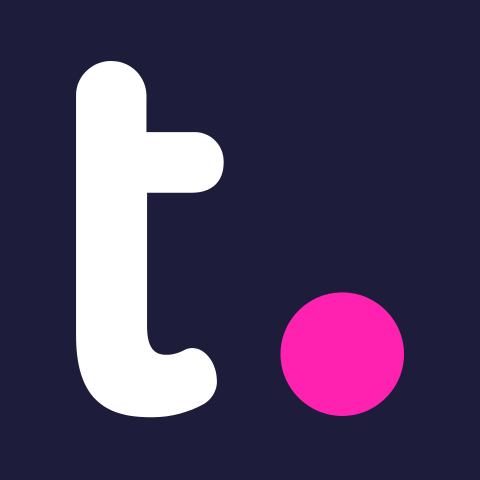
Teamwork
Best for Client Management
- Ideal ForSMBs
- Integrations20+
About Teamwork
One of Teamwork’s key strengths is its flexibility and ability to manage projects on a granular level. Teams can break down their work into tasks and subtasks, customize fields to track information relevant to their specific needs and categorize tasks using tags. This makes it easy to organize, find, and manage large amounts of project data while keeping all team members in sync.
Teamwork supports time tracking, making it simple to log hours, track billable time, and create timesheets. This feature, combined with invoicing and budget management, ensures that teams stay on top of time and finances, tracking all costs within a single platform. For businesses working with long-term clients, the retainer management feature helps balance fluctuating budgets across projects.
Collaboration is central to Teamwork. The platform includes tools like messaging, comments, and document sharing to facilitate communication between team members and clients. Whether updating a task with a comment or collaborating on a document, Teamwork.com ensures everyone is aligned.
Why consider Teamwork as an Asana alternative?
Teamwork is a great alternative to Asana for teams needing better time tracking, client billing, and an easy-to-use interface.
Learn more about Teamwork in our detailed review.
Teamwork Features
Time Tracking: Log time, create timesheets, and track billable hours for accurate project accounting.
Invoicing and Budget Management: Generate invoices based on billable hours, manage budgets, and set notifications for spending thresholds.
Task and Subtask Management: Break down projects into detailed tasks and subtasks with custom fields and tags for better organization.
Collaboration Tools: Use comments, messages, and shared documents to keep team communication organized and on track.
Automation and Integrations: Save time by automating repetitive tasks and integrating with popular tools like CRM and accounting software.
Teamwork Pros/Cons
Offers multiple project views such as List, Table, Gantt, and Board, along with task essentials like dependencies and sub-tasks to manage projects efficiently.
Provides advanced security features such as Single Sign-On (SSO) and dedicated infrastructure, which is particularly beneficial for larger enterprises requiring enhanced security measures.
Offers time tracking in every plan, which is rare.
Reporting features are not as comprehensive as some other project management tools.
Offers customization options, but it is not as flexible as some other tools in terms of tailoring workflows to specific business needs.
Team members must be invited to the platform before being assigned tasks.

Airtable
Best for Project Tracking
- Ideal ForSMBs
- Integrations30+
About Airtable
Airtable is a no-code platform that empowers teams across industries to build custom apps, automate workflows, and manage data effectively. Airtable combines the simplicity of a spreadsheet with the power of a database, allowing teams to structure and connect critical data in ways that suit their unique processes.
Whether you’re looking to streamline product roadmaps, manage marketing campaigns, or centralize business-critical workflows, Airtable offers the flexibility to create tailored solutions without the need for coding expertise.
Airtable has a feature called ‘interface designer’ that lets users create apps quickly and support both small teams and enterprise-scale operations. With its integrations for popular tools like Jira, Salesforce, and Slack, Airtable ensures smooth communication and data sharing across your organization.
Why consider Airtable as an Asana alternative?
Airtable combines a spreadsheet interface with powerful database features, making it a superior choice for teams needing flexible data handling, which Asana doesn’t provide.
Airtable Features
No-code platform: Build custom apps and automate workflows without coding expertise.
AI integration: Use AI to summarize data, generate content, categorize feedback, and more.
Relational database: Pull and manage massive datasets from platforms like Snowflake and Databricks.
Real-time sync: Ensure data updates are instantly reflected across all teams and workflows.
Customizable templates: Get started quickly with pre-designed templates for marketing, product strategy, and global operations.
Airtable Pros/Cons
Provides an intuitive, user-friendly interface that simplifies the use of advanced functions like filters and formulas.
Offers a free plan that is perfect for small teams, providing unlimited bases, 1,000 records per base, and support for up to five editors.
Airtable AI offers powerful features to enhance workflow efficiency by embedding generative AI capabilities within apps.
Offers versatile data visualization options, including Grid, Kanban, Calendar, Gallery, and custom form views.
Task management can be clunky, making tracking progress and status updates hard.
If you want to use all the features of its AI, you need to buy the add-on, which costs $7 per seat/month.
Handling subtasks requires creating and linking separate tables, which is more complex.
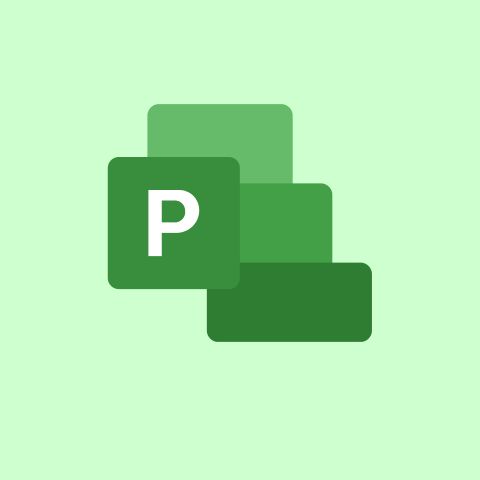
Microsoft Project
Best for Microsoft 365 Integrations
- Ideal ForLarge Enterprises
- IntegrationsMicrosoft Tools
About Microsoft Project
Microsoft Project empower project managers to efficiently plan, execute, and monitor tasks, resources, and timelines. With the ability to create detailed Gantt charts, allocate resources, and track progress in real-time, the software ensures teams stay on track and meet deadlines effectively.
Microsoft Project caters to different needs through its various versions: Project Standard, Project Professional, Project Server, Project Online, and Project for the Web. Each version is tailored for specific use cases, from solo users to large enterprises, ensuring flexible project management solutions that adapt to modern work environments.
With features like resource allocation, task scheduling, and time tracking, Microsoft Project improves productivity and provides project managers with data-driven insights to make informed decisions. Its integration with other Microsoft tools, like SharePoint and Teams, further enhances collaboration and project visibility.
Why Consider Microsoft Project as an Asana Alternative?
Microsoft Project offers advanced project planning, including Gantt charts, resource management, and budget forecasting, making it more suitable for complex enterprise-level projects than Asana.
Microsoft Project Features
Task Management: Organize, assign, and monitor project tasks easily with Microsoft Project’s task management feature. This ensures teams stay focused on priorities and milestones.
Resource Management: Efficiently allocate and track resources such as personnel, finances, and materials, optimizing resource use and avoiding over-allocation.
Gantt Charts: Visualize project timelines and task dependencies with Gantt charts, making it easier to understand project flow and communicate schedules with stakeholders.
Time Tracking: Monitor time spent on tasks, ensuring deadlines are met and productivity remains high throughout the project.
Collaboration Tools: Seamless collaboration through shared documents and discussion boards, fostering communication and teamwork among project members.
Reporting: Generate customizable reports to gain insights into project progress, helping project managers make data-driven adjustments to keep projects on track.
Microsoft Project Pros/Cons
Allows users to allocate and manage resources efficiently, with features like resource scheduling, tracking, and optimization.
Offers powerful reporting capabilities and the ability to integrate with Power BI, Microsoft Project provides in-depth insights into project performance, resource utilization, and financials.
Adheres to the highest standards of data security, compliance, and privacy.
Due to its extensive range of features and functionalities, Microsoft Project can be difficult for beginners to learn.
The subscription plans for Microsoft Project can be expensive even for bigger team.
For smaller, straightforward projects, Microsoft Project may feel overly complex, with more features than necessary, leading to inefficiencies.

ProofHub
Best for Team Collaborations
- Ideal ForSMBs
- Integrations5+
About ProofHub
ProofHub is an all-in-one project management tool that simplifies collaboration and communication within teams. Teams can create tasks, assign them to members, and set deadlines, ensuring everyone stays on track. The platform includes time tracking, allowing users to log hours spent on tasks easily, which helps in project budgeting and resource allocation.
ProofHub makes collaboration easy with its built-in discussions, chat features, and file-sharing capabilities. Users can provide feedback directly on files and track changes over time. Additionally, ProofHub offers strong data security, ensuring that sensitive project information remains protected.
Additionally, ProofHub offers task management tools like Kanban boards, Gantt charts, and calendars to track project progress. Teams can set task priorities, deadlines, and monitor workloads to stay on schedule.
Why consider ProofHub as an Asana alternative?
ProofHub offers unlimited users with no per-user pricing, alongside integrated proofing and team discussions, providing an edge in cost-efficiency and collaboration over Asana.
ProofHub Features
Time Tracking: Log hours spent on tasks, aiding in project budgeting and resource management.
Proofing Tools: Review and approve creative assets by leaving comments directly on files.
Discussion Topics: Organize conversations with specific threads to keep discussions focused.
Real-time Chat: Communicate instantly with team members through one-on-one or group chats.
File Sharing and Version Control: Share and manage files easily while keeping track of document revisions.
Custom Roles and Permissions: Manage user access based on specific project needs for enhanced security.
ProofHub Pros/Cons
Offers unlimited users in both of its plans, which is great for big teams.
Combines task management, real-time chat, time tracking, file storage, and more into one platform, eliminating the need for multiple tools like Slack, Trello, and Evernote.
Offers detailed project reports and is highly customizable.
Only two plans are available. And while the higher tier plan has comprehensive features, the essential plan lacks many useful features like project manager, API access, priority support, data export, and more.
Offers fewer integrations compared to other project management tools.
No free plan is available.
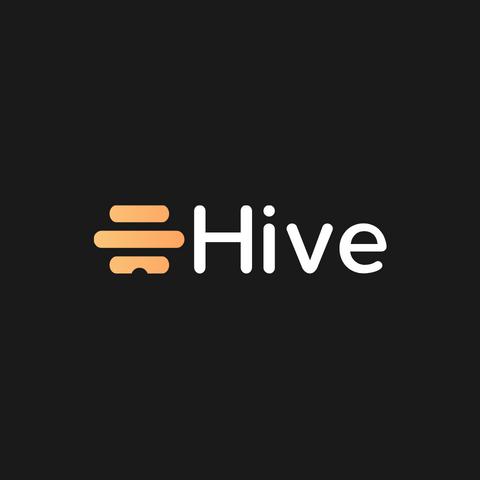
Hive
New in the Market
- Ideal ForSMBs
- Integrations1,000+
About Hive
Hive combines project tracking, collaboration, and reporting, making it an essential solution for businesses looking to improve their operations. One of Hive’s features is its flexible goal-setting capabilities. Users can create various types of goals, including task-based, numerical, and monetary objectives.
Hive excels in form creation, offering an upgraded Form Builder that allows users to design custom forms without any coding knowledge. These forms can capture feedback, requests, and orders, streamlining data collection. Once submitted, the information automatically generates action cards within Hive, ensuring that all input is organized and accessible.
Additionally, Hive’s project templates simplify the initiation of new projects. Users can apply pre-designed templates that fit various use cases, from marketing campaigns to creative projects. This feature saves time and ensures that all critical elements are considered right from the start.
Why consider Hive as an Asana alternative?
Hive excels in real-time collaboration with its native email integration and advanced analytics, helping teams manage workloads and communication more effectively than Asana.
Hive Features
Customizable Project Views: Choose from Kanban boards, Gantt charts, or calendar layouts to visualize projects as per your team’s workflow preferences.
Real-Time Collaboration: Team members can comment, share files, and create collaborative notes directly on tasks for effective communication.
Reporting Dashboards: Visualize project completion status, overdue actions, and team performance through intuitive reporting tools.
Task Management: Features include sub-tasks, recurring tasks, dependencies, and project templates for streamlined task organization.
Workspace Activity Tracking: Monitor all activity across your workspace in real time to stay updated on changes and progress.
Hive Pros/Cons
All plans include Gantt charts and free access to AI tools for project planning and content generation, enhancing efficiency.
Hive has a great UI, is easy to set up, and the learning curve is easy.
Offers various customizable templates for creating projects faster.
Hive mobile app has bad reviews. Users complain that it has significantly reduced functionality compared to the desktop version.
Hive’s project portfolio management features are basic. Businesses with complex project portfolios may need a more specialized solution, such as ServiceNow or Planisware, to manage their projects effectively.

OpenProject
Best Open Source to Self-Host
- Ideal ForMedium to Large Enterprises
- IntegrationsNextcloud, OneDrive/SharePoint, GitHub, GitLab
About OpenProject
OpenProject is an open-source project management software designed for organizations that prioritize collaboration and data sovereignty. It offers a web-based platform that allows team members to access all project-related information from anywhere at any time.
The software supports various project management methodologies, including agile, traditional, and hybrid approaches. OpenProject is particularly valued by organizations focused on social impact, providing tools that enhance project transparency and facilitate stakeholder engagement.
OpenProject is committed to open-source principles. Users have access to the source code, which allows for modifications and customizations according to their specific needs. This openness fosters a community of users and developers who continuously contribute to improving the software. OpenProject is also one of the best free project management software.
Why consider OpenProject as an Asana alternative?
OpenProject is a better choice for organizations that prioritize open-source solutions and data sovereignty. Unlike Asana, it offers advanced project tracking with full data control.
OpenProject Features
Hybrid project management: Support for both agile and traditional methodologies enables teams to choose the best approach for their projects.
Collaborative tools: Features like work package management and project timelines facilitate teamwork and communication among stakeholders.
User-friendly interface: An intuitive design makes it easy for team members to navigate the platform and manage projects effectively.
Remote work support: OpenProject is optimized for remote collaboration, allowing teams to work together seamlessly, regardless of location.
Transparent reporting: Comprehensive reporting tools provide insights into project performance and progress, helping teams stay aligned and informed.
OpenProject Pros/Cons
Allows for customization and flexibility, catering to unique project management requirements.
Offers special rates for educational institutions and non-profits, promoting accessibility.
Users can rely on community forums for best-effort support and shared knowledge among users.
Support response times vary significantly across plans, and users on lower-tier plans may experience longer wait times for assistance.
Pricing tiers and various add-ons can be confusing, making it difficult for potential users to understand the total cost and the best plan for their needs.
Setting up and using complex features can be challenging, particularly for smaller teams or those unfamiliar with project management software.
When to Look for Asana Competitors?
Asana might not be the best fit for large-scale projects that require detailed tracking, as other platforms offer more advanced tools for handling complexity. The interface can feel cluttered, and customization options are limited compared to some of the best project management software.
Additionally, Asana’s inability to assign tasks to multiple people and its slow customer service response can hinder collaboration. Lastly, Asana’s features are confined to individual projects, which limits scalability and standardization across your account. To use the same forms, templates, or automation across projects, you must manually duplicate them for each new project.
More Readings on Project Management
-
 EditorRashmi Sharma is an editor at Geekflare. She is passionate about researching business resources and has an interest in data analysis.
EditorRashmi Sharma is an editor at Geekflare. She is passionate about researching business resources and has an interest in data analysis.


